How does an automatic washing machine work?
 The operation of the washing machine begins with the addition of water. It occurs using an inlet hose connected to the water supply. A pressure switch ensures that the amount of water collected corresponds to what is required. It is also called a level sensor or level relay. By the way, smart machines are able to find out how much laundry is in the tank. And pour in exactly the amount of water needed to wash this amount.
The operation of the washing machine begins with the addition of water. It occurs using an inlet hose connected to the water supply. A pressure switch ensures that the amount of water collected corresponds to what is required. It is also called a level sensor or level relay. By the way, smart machines are able to find out how much laundry is in the tank. And pour in exactly the amount of water needed to wash this amount.
Movement of water during washing
During the washing process, water is not only poured in, but also drained when necessary. And the drain pump (pump) does this. It is located at the bottom of the washing machine. To prevent foreign objects from getting inside the pump, a filter is installed in front of it. It is designed to protect the pump from small objects. Such as:
- Coins,
- Paper clips,
- Buttons,
- Pins,
- And so on.
These items often end up inside the machine along with laundry items.
It is advisable to clean the drain pump filter at least once every six months. This is done quite simply. The filter is located at the bottom of the washing machine on the front side. In order to get to it, you need to remove the bottom panel, then unscrew the filter. Clean it and return it to its place. While you remove the filter from the machine, water will flow. Therefore, prepare a rag or a small container.
To show you the entire process of cleaning the filter, we decided to add a video. See:
The drain pump can also be involved in washing in another way. For example, it can create water circulation up the tank or towards the dispenser. Some models use a separate pump for this.
The movement of water in the lower part of the washing machine tank dissolves the remaining detergent there. This helps improve the quality of the wash and prevents some of the washing powder from going down the drain.
An additional amount of washing powder and water solution gets onto the clothes from the ribs of the tank, which are located on its inside. They perform a mechanical effect on the laundry, lifting and dropping it while the tank rotates. Also, in many models of machines, the ribs also additionally water the laundry with a solution.
When the required amount of water has been collected into the tank, the heating element (heating element) is connected to operation. It is located under the tank of the machine. In some models it is located in the front, in others in the back. The heating temperature is controlled by a special device that allows you to heat the water to the required number of degrees specified in the washing program.
Heating water and rotating the washing machine drum
 For normal washing it is necessary to use warm water, detergent and mechanical action. A heating element is used to heat the water, washing powder is used as a means, and the rotation of the drum is used for mechanical action. The washing machine motor is used to make the drum rotate. It is located at the bottom of the machine under the tank.
For normal washing it is necessary to use warm water, detergent and mechanical action. A heating element is used to heat the water, washing powder is used as a means, and the rotation of the drum is used for mechanical action. The washing machine motor is used to make the drum rotate. It is located at the bottom of the machine under the tank.
There is a pulley installed on the back of the tank. It and the engine are connected by a drive belt. The motor spins the belt, and it, in turn, creates rotation of the drum inside the tank. This design of the machine is considered common and quite acceptable. But it also has its shortcomings. Constant contact of the belt with moving elements creates the effect of friction. And sooner or later the belt wears out.Also, due to this design, unnecessary vibrations of the machine may occur.
Therefore, some washing machines do not use a belt drive. It was replaced with a direct drive (DD – direct drive). Similar washing machines are actively made at LG (ElG). In them, the motor is mounted directly on the drum. This design allows you to spend less energy for rotation, reduces the force of vibration and makes it possible to save space inside the machine.
The motor used is less noisy and, by minimizing the required space, allows for more compact machines.
Spin and wash
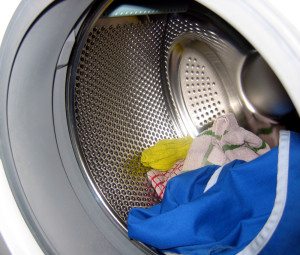 During washing, the drum rotates slowly. First in one direction, then in the other direction. And during the spin cycle, the rotation speed of the drum reaches its maximum. A large number of revolutions is necessary in order to make the laundry as dry as possible. Due to the light of centrifugal force, water from the wrung-out items goes into small holes in the tank. It is then removed by the drain pump.
During washing, the drum rotates slowly. First in one direction, then in the other direction. And during the spin cycle, the rotation speed of the drum reaches its maximum. A large number of revolutions is necessary in order to make the laundry as dry as possible. Due to the light of centrifugal force, water from the wrung-out items goes into small holes in the tank. It is then removed by the drain pump.
The spin speed increases gradually. This is necessary to ensure that the laundry is evenly placed on the inner surface of the drum. Due to this, unnecessary vibrations are avoided.
If suddenly the balance inside the tank is disturbed, the rotation speed slows down again and the laundry is redistributed inside the drum. Then the washing machine picks up speed again and continues spinning.
Control module
The control module controls all processes during washing programs. He decides when it’s time to turn the heating element on or off. It turns on the drain pump when it is necessary to remove water from the tank. He decides when and at what speed the drum should rotate. It also monitors the performance of various sensors that are provided during the wash process.Not a single modern washing machine can do without such a control system.
The control module is one of the most expensive parts of the machine. Its high price is due to the fact that it has a very complex device. Also, if this part is damaged, we do not recommend replacing it yourself. In case of such trouble, it is better to contact specialists. They will select the necessary part and replace the faulty one.
Tank and drum
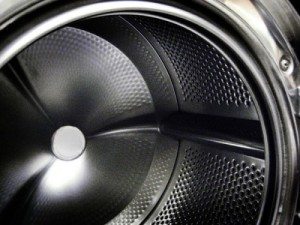 The washing machine drum is located inside the tub. It is into the drum that we load dirty laundry. Water is poured into the tank and detergent enters. Due to the presence of small holes, the solution of water and washing powder comes into contact with the items in the tank.
The washing machine drum is located inside the tub. It is into the drum that we load dirty laundry. Water is poured into the tank and detergent enters. Due to the presence of small holes, the solution of water and washing powder comes into contact with the items in the tank.
The drum is made of stainless steel. The tank can consist of either stainless steel or plastic. More often it is made of two parts. It also happens that there are tanks that cannot be disassembled and consist of a single “piece”. There are craftsmen who, if necessary, cut non-separable tanks into two parts. And then during assembly they are connected using bolts and waterproof sealant.
Plastic tanks are lighter and cheaper, but they also have disadvantages. For example, they are more fragile than metal ones. There are models of cars where the tanks are inclined. But usually they are located strictly horizontally.
For those people who prefer a visual demonstration of the washing machine, we decided to add a video. In this video you will see not only the design of washing machines, but also their brief history. Watch the video:
Interesting:
11 reader comments
Add a comment Cancel reply
Categories
Washing machine repair


For buyers

For users

Dishwasher


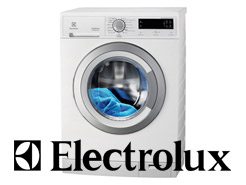
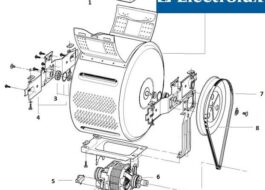
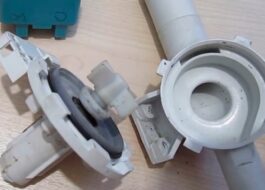
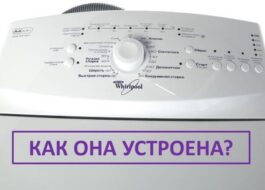











Is it possible to connect the machine if there is no water supply through the tank?
Most likely it is possible. Study the instructions. Or, best of all, consult a specialist. If you are seriously interested in the design of washing machines, then read the relevant literature. It is quite possible that you can do this yourself.
It is possible, but you need pressure, like in a water pipe. I solved this problem by installing a pump. As a result, my water, through a 200-liter tank, goes through the pump and into the washing machine and into the taps, just like in an apartment
Yes
Water leaks from the bottom of the powder container when pouring water.
Water is leaking from the powder container
Hello everyone, my name is Olya. I called a mechanic through a friend to repair my Veko car; the drum was not spinning. The master looked, removed some kind of motor and disappeared completely. Now I don’t know what to do? I have another Indesit machine. Tell me, please, is it possible to transfer the engine from one car to another?
The contacts of the drain pump are burnt, what should I do???
If the pump is working! Clean the contacts and connect.
Water comes in, but during the spin cycle it turns on 4E, which means there is not enough water. What to do?
Tell me, what is a plumb line or suspension in a washing machine? Thanks in advance :)